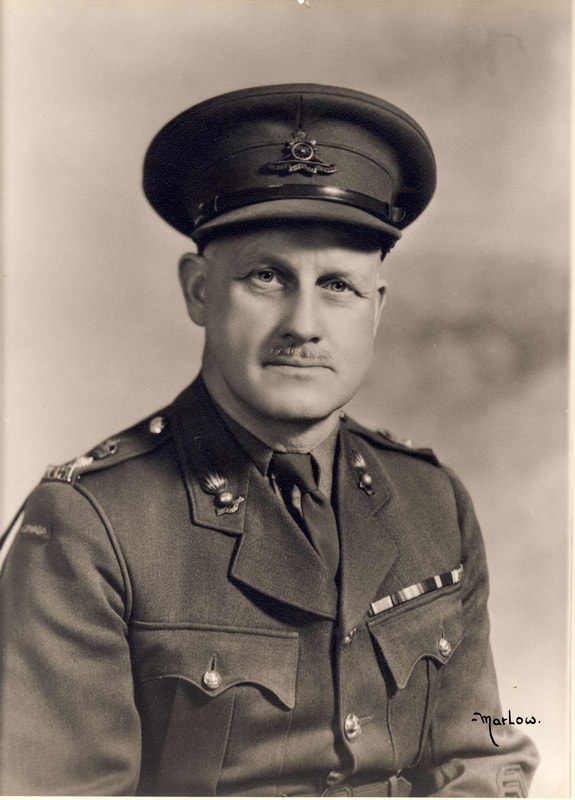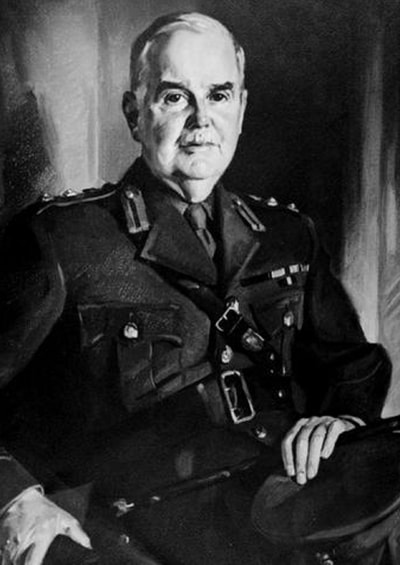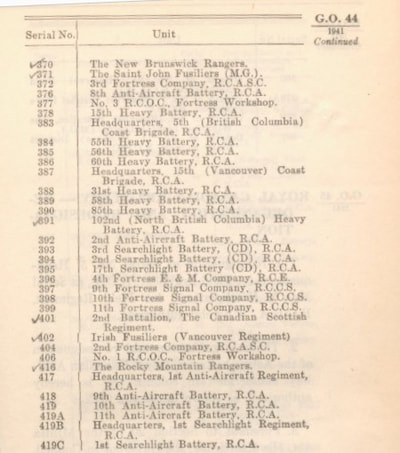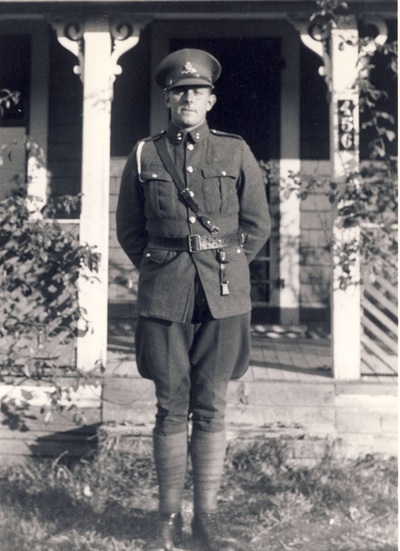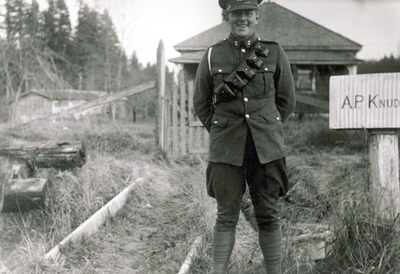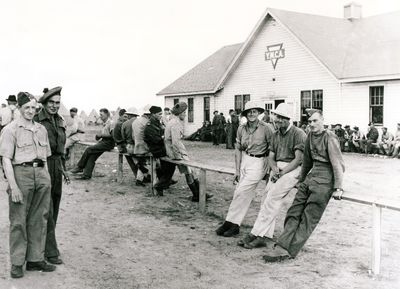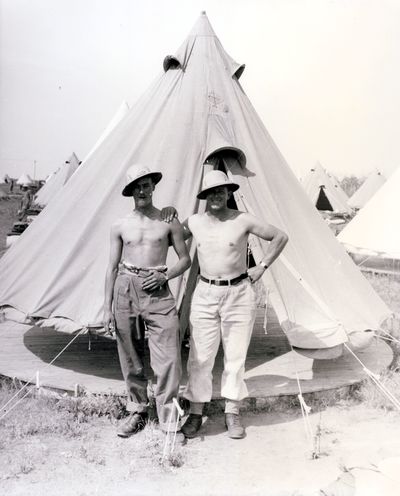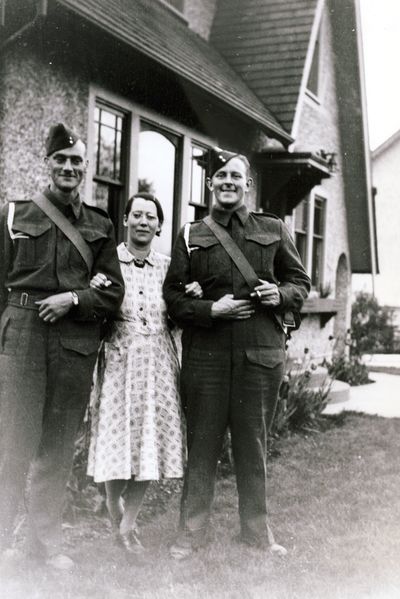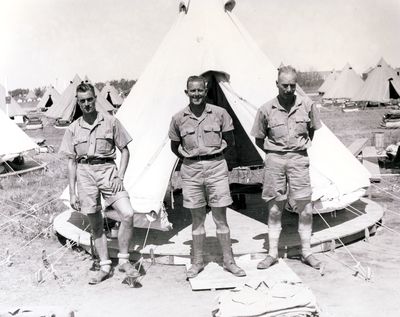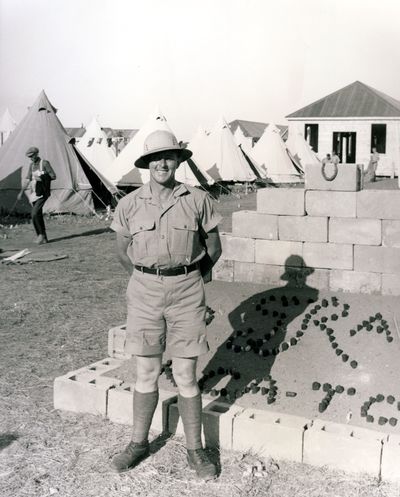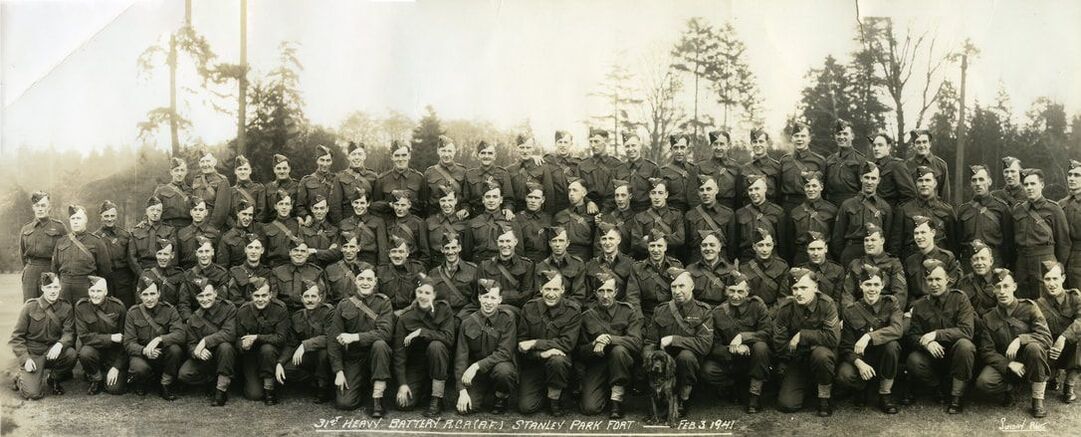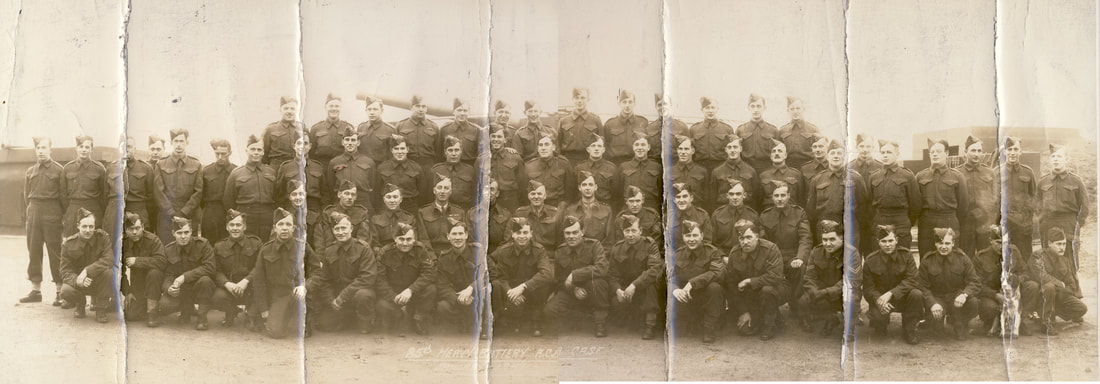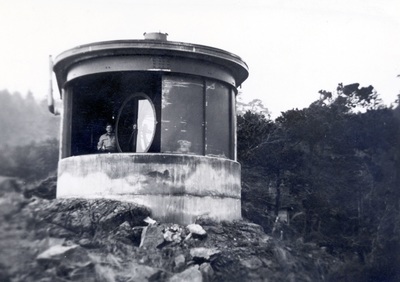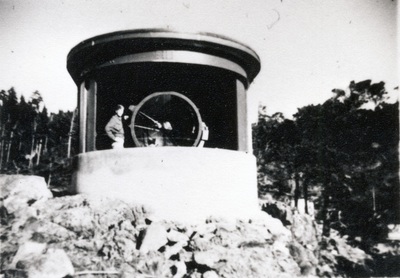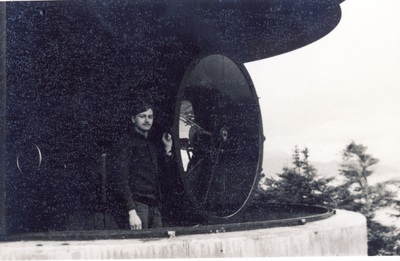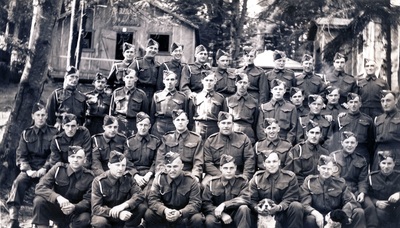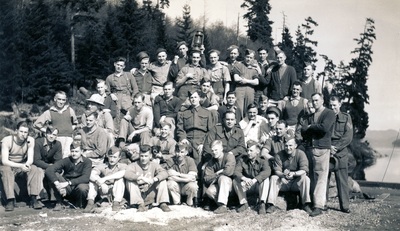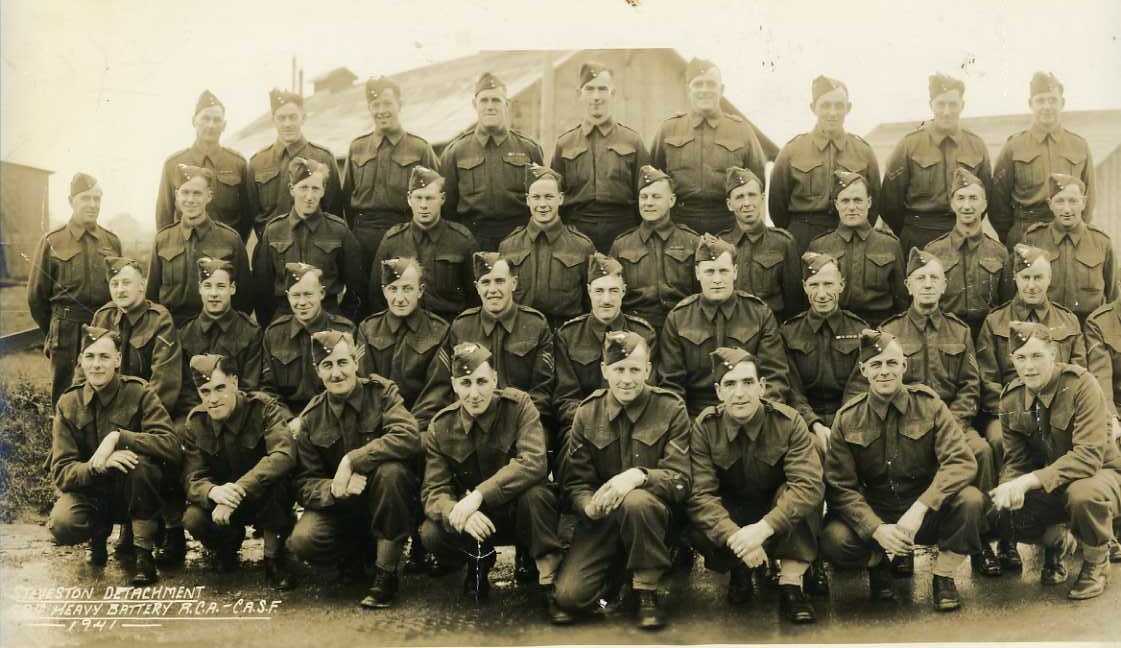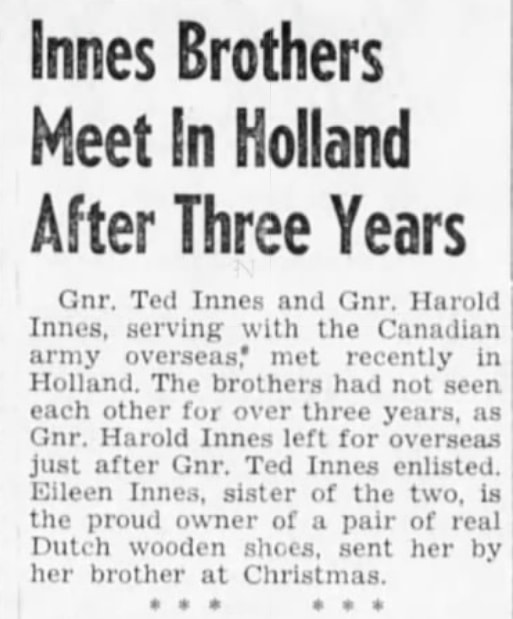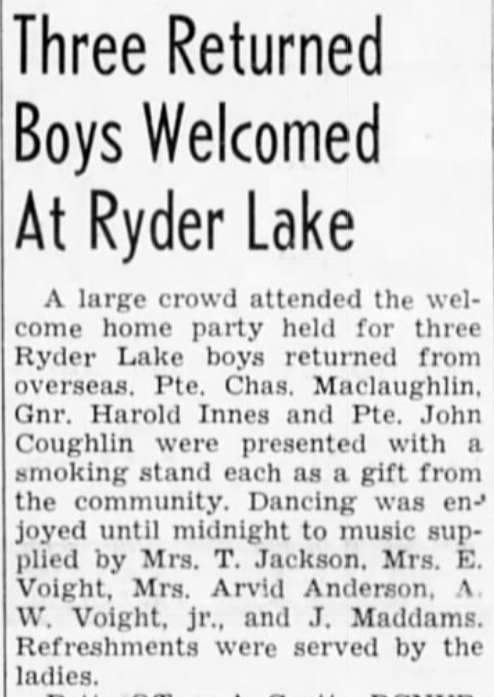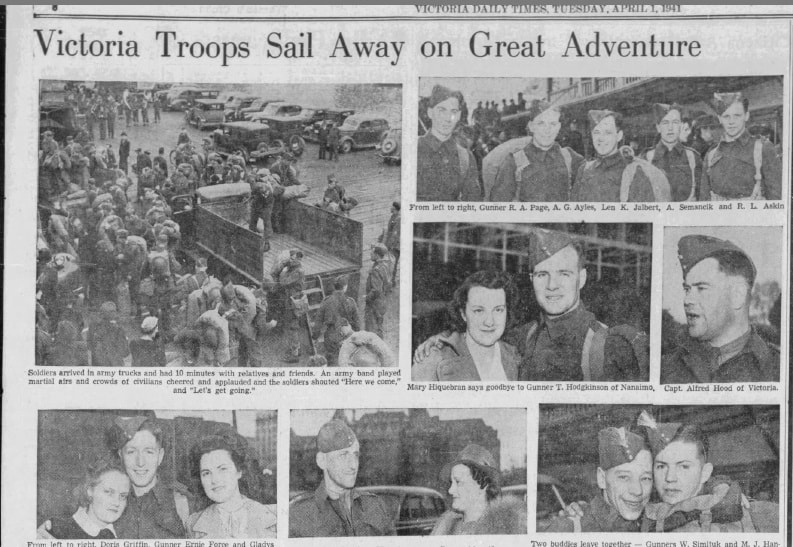15th (Vancouver) Coast Brigade
The Royal Canadian Artillery
Canadian Active Service Force
1941
The Royal Canadian Artillery
Canadian Active Service Force
1941
as at 22 February 2020
Sub-units
31st Heavy Battery, RCA
58th Heavy Battery, RCA
85th Heavy Battery, RCA
31st Heavy Battery, RCA
58th Heavy Battery, RCA
85th Heavy Battery, RCA
Key Appointments
Nominal Roll
Major JE Piercey
Sergeant Major CA Buchanan
Sergeant Wilfred Cartwright
Sergeant Davidson
Gunner WP Gatenby
Gunner Rolland
Gunner AV Hough
Major JE Piercey
Sergeant Major CA Buchanan
Sergeant Wilfred Cartwright
Sergeant Davidson
Gunner WP Gatenby
Gunner Rolland
Gunner AV Hough
|
Structural Changes
Administrative cleanup was conducted in 1941 General Order 44 which disbanded the details that were called out in 1939, placed the complete unit on Active Service and absorbed the personnel from the details into those units. | ||||||
Active Service
Security is enhanced in December 1941 after Japan attacks Pearl Harbour and declares war on Britain and the United States. The attack on Pearl Harbor on December 7th, 1941, suddenly brought the role of West Coast defences back into sharp focus and every effort was made to meet the projected scales of attack as outlined in the Treatt Report. The prospect of some form of attack now entered the thoughts of many. In anxious minds logs and floating debris were transformed into periscopes and submarines; strange noises turned into a possible enemy landing party and the whole garrison frequently took up their battle stations. Yorke Island now took on a much more important role and it was decided that her armament should be increased. With no surplus guns in Canada and those on order in England unlikely to arrive for at least another year a straight trade was made with the two 6-inch guns at Ferguson Point in Stanley Park, Vancouver and the two 4.7-inch ones at Yorke Island. To keep both batteries operational only one gun from each was to be moved at a time. The changeover was to take place at the end of June 1942 and early July.
Vancouver Defended, Peter Moogk, Pg 92
Security is enhanced in December 1941 after Japan attacks Pearl Harbour and declares war on Britain and the United States. The attack on Pearl Harbor on December 7th, 1941, suddenly brought the role of West Coast defences back into sharp focus and every effort was made to meet the projected scales of attack as outlined in the Treatt Report. The prospect of some form of attack now entered the thoughts of many. In anxious minds logs and floating debris were transformed into periscopes and submarines; strange noises turned into a possible enemy landing party and the whole garrison frequently took up their battle stations. Yorke Island now took on a much more important role and it was decided that her armament should be increased. With no surplus guns in Canada and those on order in England unlikely to arrive for at least another year a straight trade was made with the two 6-inch guns at Ferguson Point in Stanley Park, Vancouver and the two 4.7-inch ones at Yorke Island. To keep both batteries operational only one gun from each was to be moved at a time. The changeover was to take place at the end of June 1942 and early July.
Vancouver Defended, Peter Moogk, Pg 92
New enrolees
As the years passed and the social composition of the coast artillery units in Canada changed, morale tended to fall. At the beginning of the Second World War men were eager to join the army and they were happy to perform their new duties. The war, after all, had ended the economic depression that had blighted the lives of a generation. Young men who had survived on charity and public relief work were offered good food, a bed, clean clothes and a measure of self-respect by the armed forces. "Thank-you, thank-you" said Arne P. Knudsen, a Danish immigrant who had been on the breadlines, as food was heaped on his plate in the mess. "Don't thank me," replied the dispenser of food, "thank Hitler."
As the years passed and the social composition of the coast artillery units in Canada changed, morale tended to fall. At the beginning of the Second World War men were eager to join the army and they were happy to perform their new duties. The war, after all, had ended the economic depression that had blighted the lives of a generation. Young men who had survived on charity and public relief work were offered good food, a bed, clean clothes and a measure of self-respect by the armed forces. "Thank-you, thank-you" said Arne P. Knudsen, a Danish immigrant who had been on the breadlines, as food was heaped on his plate in the mess. "Don't thank me," replied the dispenser of food, "thank Hitler."
In June 1941 the press interviewed men stationed in Vancouver's coastal batteries. "Finest In Comfort and Food Is Provided for Soldiers In Dominion's New Army" was the heading for Don Mason's report in the Vancouver Daily Province. He spoke to a recruit who had joined up two weeks before and who "was agreeably surprised to find such excellent living conditions in a Canadian army camp. 'l had been prepared for something quite different' (said the recruit). 'You see, I had heard about 'lousy' army grub...you know the sort of thing. But I have found that the grub in this man's army is as good as, or better than, that served in the average Canadian home."' For the benefit of his readers, the reporter copied down the menu for that day:
BREAKFAST - Rolled wheat, bacon and boiled eggs, toast and honey, coffee.
LUNCH - Vegetable soup, roast beef , roasted potatoes, boiled carrots, bread pudding and custard sauce, bread, tea.
SUPPER - Hamburgers, fresh tomatoes, boiled potatoes, baked apple, tea.
"lt's fresh milk for breakfast," added the reporter, "canned milk for other meals. A box of British Columbia's famous apples is kept in the kitchen at all times. A soldier can have as many as he wants as often as he wants." The enthusiastic recruit encountered by Mason at the Stanley Park camp, where the Third Beach parking lot is presently located, also praised army beds "Our bunks are swell, and boy! You don't know what cleanliness means until you join the army." The reporter agreed that "the hutments are cozy and comfortable; the beds are cots in tiers of two - with springs. A soldier in the last war wasn't so lucky. He slept on a bed spring of wooden slats over two-by-fours." For the recreation of the troops, Mason observed "a well-used horseshoe pitch" and "a Salvation Army hut (that) provides a canteen, table games, a reading, writing and sitting room."1 ' The Vancouver Sun reporter found "the men off duty...putting away pop and chocolate bars in the Salvation Army hut where coffee and doughnuts fill any empty stomach space between meals and after hours. The hut also provides free motion pictures, shows and games." The gunner he interviewed rated comradeship or "darned good company" high among the benefits of army life."
Vancouver Defended, Peter Moogk, Pg 100
BREAKFAST - Rolled wheat, bacon and boiled eggs, toast and honey, coffee.
LUNCH - Vegetable soup, roast beef , roasted potatoes, boiled carrots, bread pudding and custard sauce, bread, tea.
SUPPER - Hamburgers, fresh tomatoes, boiled potatoes, baked apple, tea.
"lt's fresh milk for breakfast," added the reporter, "canned milk for other meals. A box of British Columbia's famous apples is kept in the kitchen at all times. A soldier can have as many as he wants as often as he wants." The enthusiastic recruit encountered by Mason at the Stanley Park camp, where the Third Beach parking lot is presently located, also praised army beds "Our bunks are swell, and boy! You don't know what cleanliness means until you join the army." The reporter agreed that "the hutments are cozy and comfortable; the beds are cots in tiers of two - with springs. A soldier in the last war wasn't so lucky. He slept on a bed spring of wooden slats over two-by-fours." For the recreation of the troops, Mason observed "a well-used horseshoe pitch" and "a Salvation Army hut (that) provides a canteen, table games, a reading, writing and sitting room."1 ' The Vancouver Sun reporter found "the men off duty...putting away pop and chocolate bars in the Salvation Army hut where coffee and doughnuts fill any empty stomach space between meals and after hours. The hut also provides free motion pictures, shows and games." The gunner he interviewed rated comradeship or "darned good company" high among the benefits of army life."
Vancouver Defended, Peter Moogk, Pg 100
Arne Knudsen
Arne Knudsen was taken on strength 31 Battery, 15th Coast Brigade RCA in 1939. He rose quickly in the ranks due to previous experience in the Danish Navy and the International Brigade in Spain. He was a Sergeant in 1940 and then transferred to 111th Battery, 7th Anti-Tank Regiment RCA. The pictures detail a bit of the life in Shilo, MB after leaving the 15th, a train ride back home on leave and a final photo that appears to be in England. These pictures are undated and may actually be from 1942. See more...
Arne Knudsen was taken on strength 31 Battery, 15th Coast Brigade RCA in 1939. He rose quickly in the ranks due to previous experience in the Danish Navy and the International Brigade in Spain. He was a Sergeant in 1940 and then transferred to 111th Battery, 7th Anti-Tank Regiment RCA. The pictures detail a bit of the life in Shilo, MB after leaving the 15th, a train ride back home on leave and a final photo that appears to be in England. These pictures are undated and may actually be from 1942. See more...
31st Heavy Battery RCA CASF - January 1941
The Stanley Park Fort were captured in a group photo.
The Stanley Park Fort were captured in a group photo.
Rear Row - Watson, Bowden, Hughes, Frost, F.R. Wilson, A. Wilson, Reeves, Dodgshon, T. MDermott, Allison, Ralph Worseley, King, Thompson, Page, Weeks, Mokey, Palmer, Thomson, Ford, Armstrong.
3rd Row - Waterfall, Burnett, J. Fletcher, LBdr Hickman, Common, LBdr Martin, Daltin, Henderson, Harris, Sullivan, Holmes, Billodeau, Vlerk, McKee, McDonald, Gnr Ronald Clare Underhill, Thys, Thys, Lees, Vanfast, Fry, Burton, Kewley, Kendall, John Zawadsky.
2nd Row - Bdr Huff, Sgt Cartmell, Sgt George Spanks, Sgt Williams, Crosfield, Tom Pakenham, 2Lt Clayton, Capt Edward Allen Royce, Maj Fred W. Guernsey, Lt Karl Stewart Auer, Lt A.G. MacDougall, 2Lt Richard Diespecker, Sgt Smith, Martin, Sgt F. Mangles, Bdr Gilbert Liversidge, Robinson,.
Front Row - Burnett, W.Foot, Caverley, Fehr Jr, Campbell, Hutchison, Thomson, H. Snelgrove, Arnold, Maclean, O'Neill, Unknown Dog, LBdr C. O'Neill, J. Fehr Sr, Bdr Peace, John Edward Vallilee, B. Murray, LBdr Bartlett, Berry.
3rd Row - Waterfall, Burnett, J. Fletcher, LBdr Hickman, Common, LBdr Martin, Daltin, Henderson, Harris, Sullivan, Holmes, Billodeau, Vlerk, McKee, McDonald, Gnr Ronald Clare Underhill, Thys, Thys, Lees, Vanfast, Fry, Burton, Kewley, Kendall, John Zawadsky.
2nd Row - Bdr Huff, Sgt Cartmell, Sgt George Spanks, Sgt Williams, Crosfield, Tom Pakenham, 2Lt Clayton, Capt Edward Allen Royce, Maj Fred W. Guernsey, Lt Karl Stewart Auer, Lt A.G. MacDougall, 2Lt Richard Diespecker, Sgt Smith, Martin, Sgt F. Mangles, Bdr Gilbert Liversidge, Robinson,.
Front Row - Burnett, W.Foot, Caverley, Fehr Jr, Campbell, Hutchison, Thomson, H. Snelgrove, Arnold, Maclean, O'Neill, Unknown Dog, LBdr C. O'Neill, J. Fehr Sr, Bdr Peace, John Edward Vallilee, B. Murray, LBdr Bartlett, Berry.
85 Heavy Battery RCA CASF - January 1941
Unfortunately we do not have any names of any of the members in the photograph, not even the dog! The Battery Commander at this time was supposed to be Major Arthur Cowan, MC. However, there appears to be two majors (#44 and #45) and they both seem to have the same medal ribbons.
Unfortunately we do not have any names of any of the members in the photograph, not even the dog! The Battery Commander at this time was supposed to be Major Arthur Cowan, MC. However, there appears to be two majors (#44 and #45) and they both seem to have the same medal ribbons.
Rear Row - 1,2,3,4,5,6,7,8,9,10,11,12,13
Third Row - 14,15,16,17,18,19,20,21,22,23,24,25,26,27,28,29,30,31,32,33,34,35,36,37,38,39
Second Row - 40,41,42,43,44,Maj Cowan, 46,57,48,49,50
Front Row - 51,52,53,54,55,56,57,58,59,60,61,62,63,64,65,66,67,68,69
Third Row - 14,15,16,17,18,19,20,21,22,23,24,25,26,27,28,29,30,31,32,33,34,35,36,37,38,39
Second Row - 40,41,42,43,44,Maj Cowan, 46,57,48,49,50
Front Row - 51,52,53,54,55,56,57,58,59,60,61,62,63,64,65,66,67,68,69
Search lights
In May of 1941, the Commander of the U. S. Army Engineer vessel Cavanaugh adopted a very insulting attitude as five rounds from the 6-pounder and one from the 4.7-inch were required to stop and properly identify his vessel.
Vancouver Defended, Peter Moogk, Pg 88
The fort's three searchlights did not arrive until early 1941, leaving the guns virtually blind should they have had to fight a night engagement. Once installed, the lights had an approximate effective range of 3500 yards, which of course was dependent on weather conditions.
In May of 1941, the Commander of the U. S. Army Engineer vessel Cavanaugh adopted a very insulting attitude as five rounds from the 6-pounder and one from the 4.7-inch were required to stop and properly identify his vessel.
Vancouver Defended, Peter Moogk, Pg 88
The fort's three searchlights did not arrive until early 1941, leaving the guns virtually blind should they have had to fight a night engagement. Once installed, the lights had an approximate effective range of 3500 yards, which of course was dependent on weather conditions.
The members of the unit stationed at Yorke Island in April 1941.
Narrows North
In February and March 1941 the smaller searchlights were replaced by three 60-inch diameter, dispersed-beam searchlights. At 800,000,000 candlepower apiece, these modern lights were one hundred times more powerful than their predecessors and they could penetrate the darkness for a distance of three to five miles. These powerful beacons were located in what, to the casual observer, appeared to be boat huts. The fronts dropped down when the beams were to light up the narrows.
By December 1941 there were ten large, carbon-arc searchlights whose beams swept the entrance of Burrard Inlet. Classified as either fighting (concentrated beam) or observation (dispersed beam) defence electric lights, the searchlights were usually housed in concrete or wooden structures on the flanks of the gun batteries. They were placed close to the water level so that their beams would shine across the surface to reveal any object, as small as a periscope, sticking out of the water. Before the arrival of the new searchlights, drifting logs and canoes had caused a number of false alarms.
Vancouver Defended, Peter Moogk, Pg 62
f the guns moved electrically up and down after each salvo. "That's for loading," the sergeant said. "With these B.B. bullets we don't need it; but we're doing it for practice."
The guns are fired by a pistol trigger beside the sights, When a full charge is used recruits usually attach a 30-foot lanyard to the trigger, but experienced artillerymen fire the monster as if they were shooting a .22 (calibre rifle).
Vancouver Defended, Peter N Moogk, pg 95
In February and March 1941 the smaller searchlights were replaced by three 60-inch diameter, dispersed-beam searchlights. At 800,000,000 candlepower apiece, these modern lights were one hundred times more powerful than their predecessors and they could penetrate the darkness for a distance of three to five miles. These powerful beacons were located in what, to the casual observer, appeared to be boat huts. The fronts dropped down when the beams were to light up the narrows.
By December 1941 there were ten large, carbon-arc searchlights whose beams swept the entrance of Burrard Inlet. Classified as either fighting (concentrated beam) or observation (dispersed beam) defence electric lights, the searchlights were usually housed in concrete or wooden structures on the flanks of the gun batteries. They were placed close to the water level so that their beams would shine across the surface to reveal any object, as small as a periscope, sticking out of the water. Before the arrival of the new searchlights, drifting logs and canoes had caused a number of false alarms.
Vancouver Defended, Peter Moogk, Pg 62
f the guns moved electrically up and down after each salvo. "That's for loading," the sergeant said. "With these B.B. bullets we don't need it; but we're doing it for practice."
The guns are fired by a pistol trigger beside the sights, When a full charge is used recruits usually attach a 30-foot lanyard to the trigger, but experienced artillerymen fire the monster as if they were shooting a .22 (calibre rifle).
Vancouver Defended, Peter N Moogk, pg 95
Gunner Harold Innes
Gunner Innes joins the coastal artillery in 1941 and his time in the military is documented in the local newspaper, the Chilliwack Progress. Check out all the clippings here.
Gunner Innes joins the coastal artillery in 1941 and his time in the military is documented in the local newspaper, the Chilliwack Progress. Check out all the clippings here.
Lists
The following pages contain additional information relating to the 15th Field Artillery Regiment, RCA
Honours and Awards
Trophies
Commanding Officers and Regimental Sergeants Major
Honoraries
Battery Commanders and Battery Sergeants Major
Band Appointments
Nominal Roll
Guns of the Regiment
Memorial Page
The following pages contain additional information relating to the 15th Field Artillery Regiment, RCA
Honours and Awards
Trophies
Commanding Officers and Regimental Sergeants Major
Honoraries
Battery Commanders and Battery Sergeants Major
Band Appointments
Nominal Roll
Guns of the Regiment
Memorial Page

